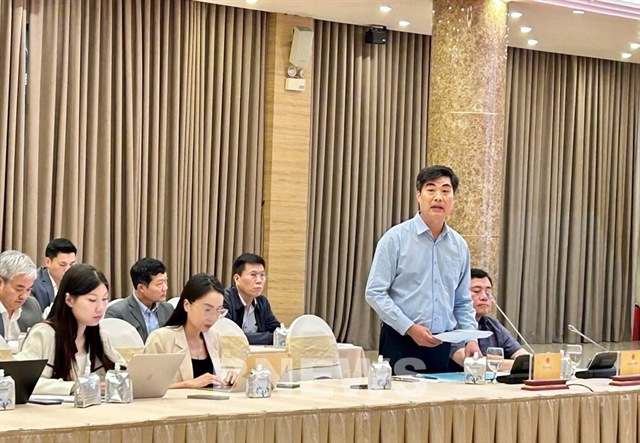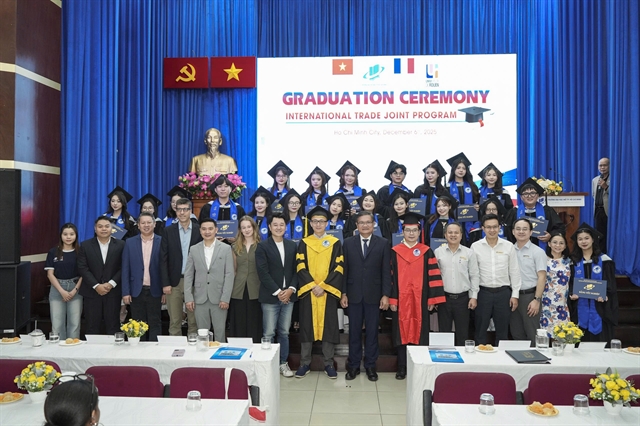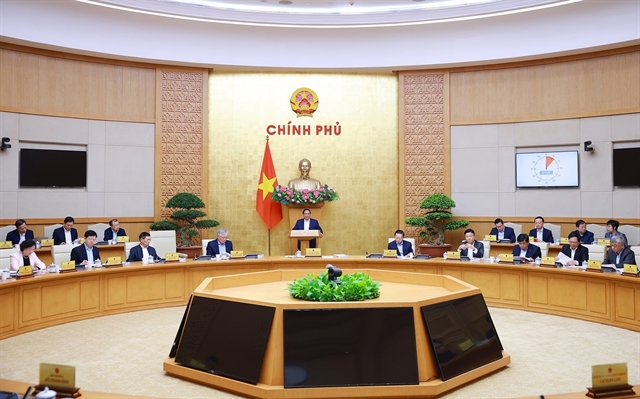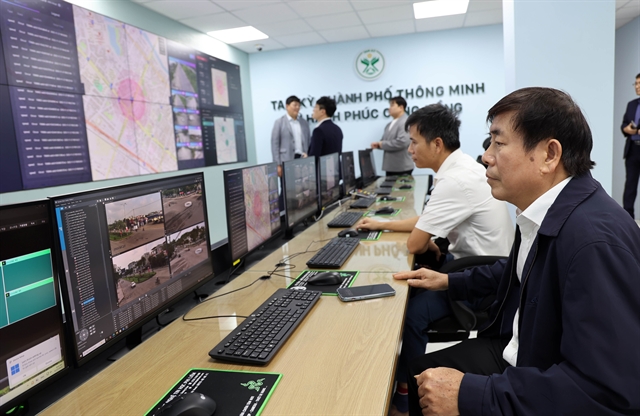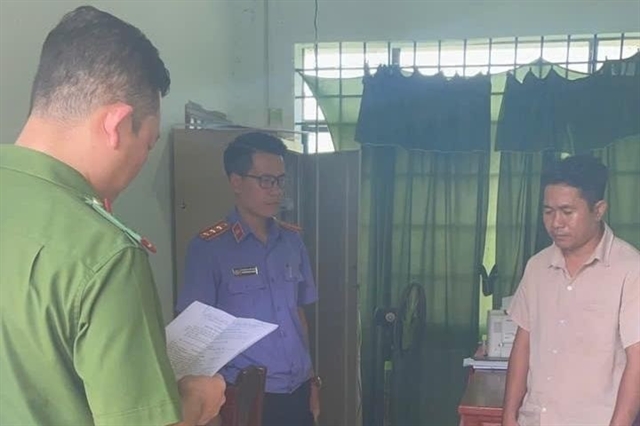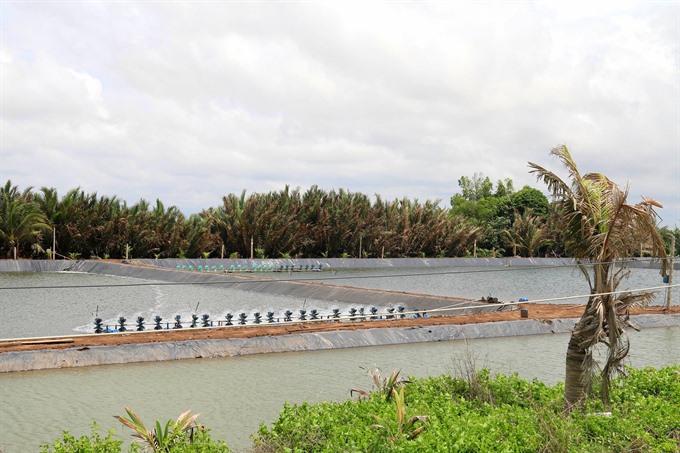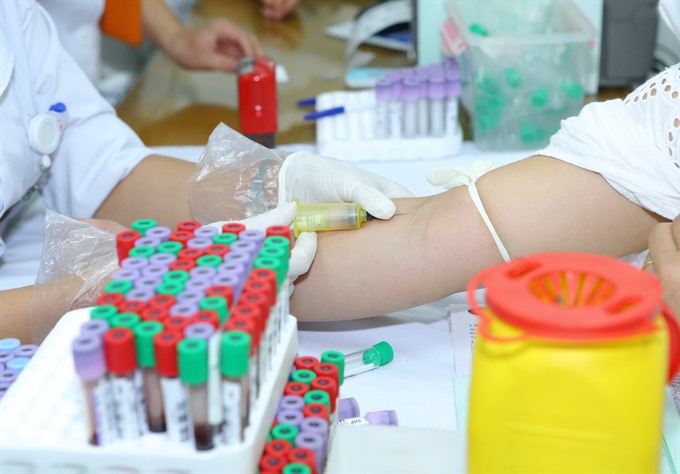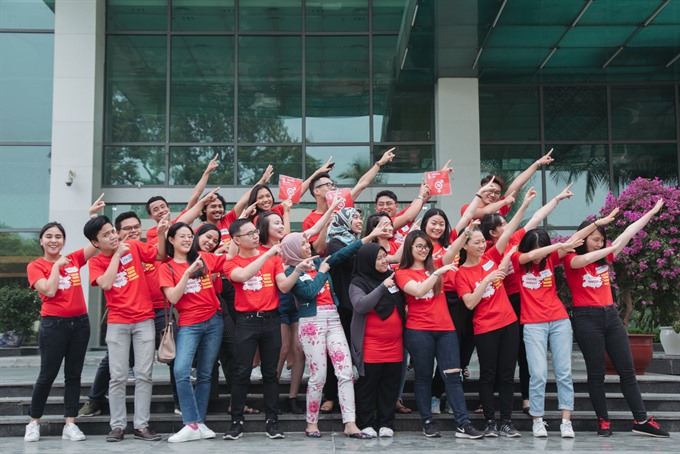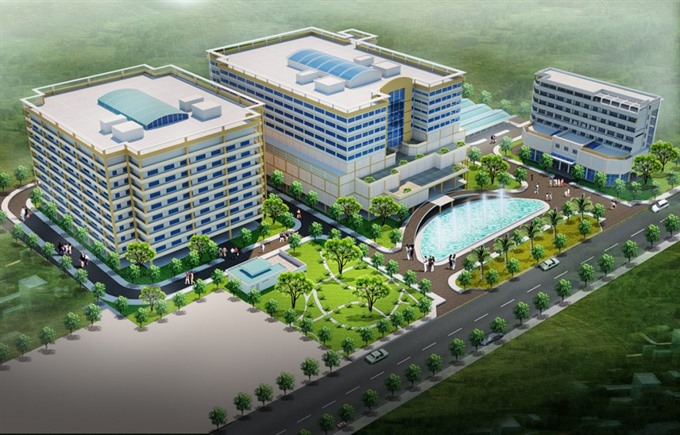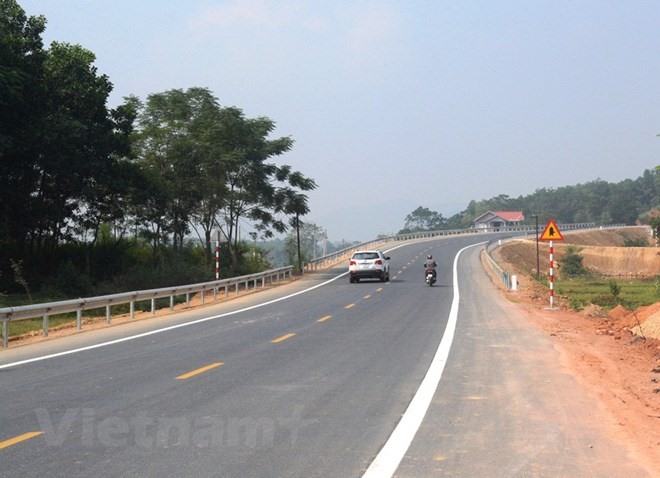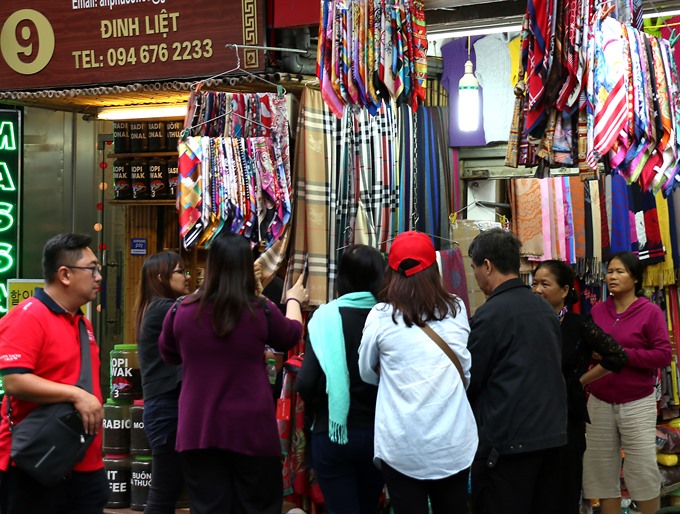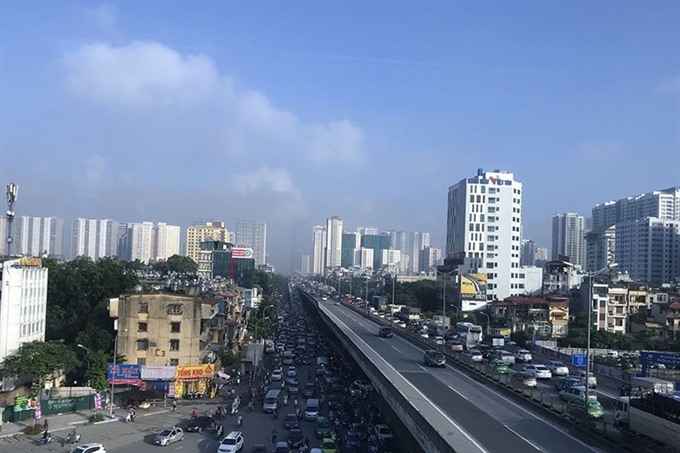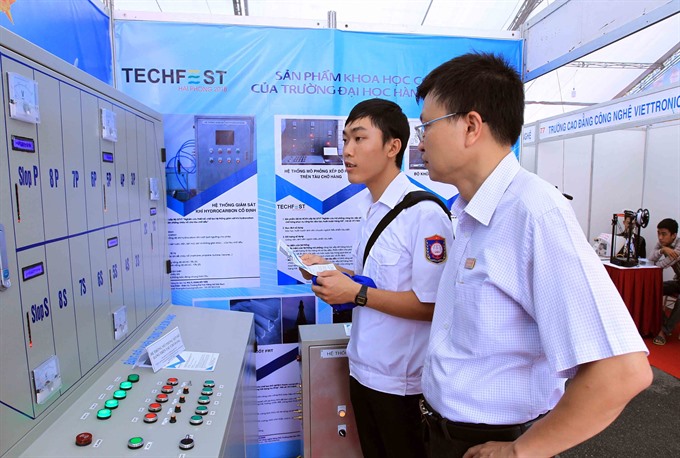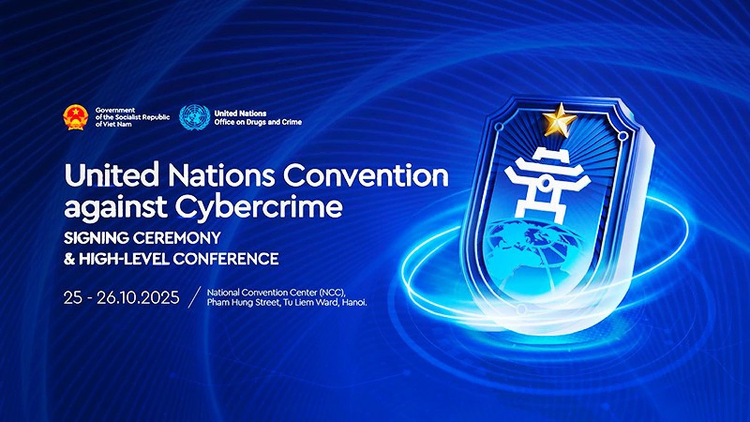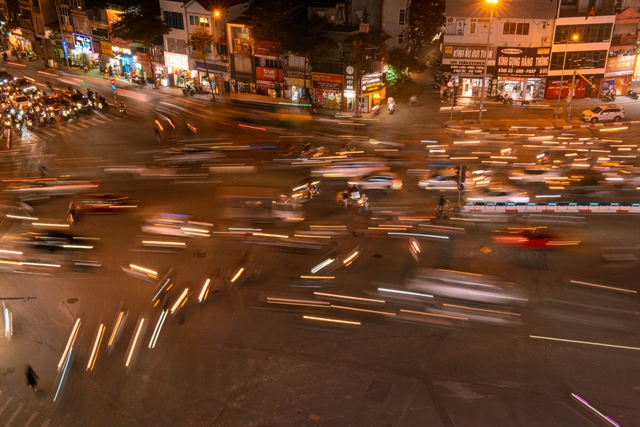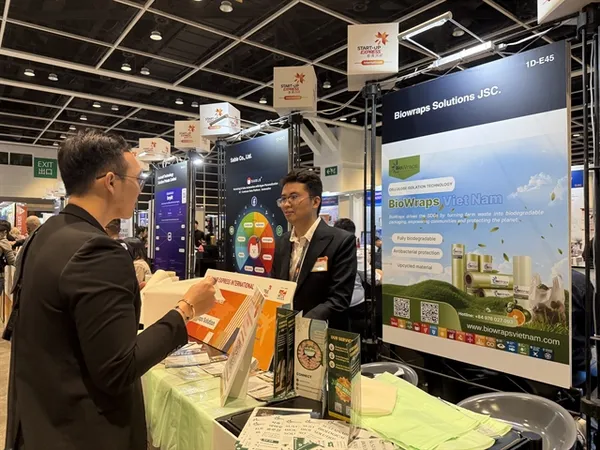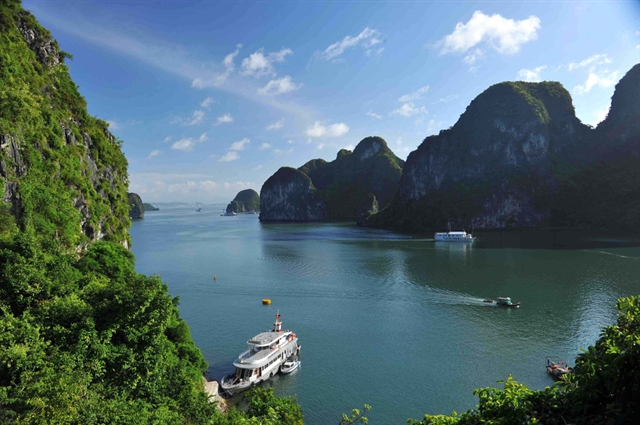
 |
| Sông Đuống Surface Water Plant’s pipe system was set up in mid-September. The project is expected bring clean water to one third of Hà Nội’s population. — VNA/VNS Photo |
HÀ NỘI ― Only 10 per cent of some 53,000 households in Mê Linh District in the outskirts of Hà Nội have access to clean water.
City authorities approved upgrades to Bắc Thăng Long Water Factory last year to improve supply in the district, but the project is not yet complete.
The latest survey by the Urban Department under the Hà Nội People’s Council shows a similar situation in other rural communes. In Đan Phượng District, for example, the four water supply facilities that were in operation by the end of the second quarter of 2018 could only process enough water to meet 30 per cent of the district’s demand.
The Sông Hồng (Red River) Surface Water Factory is expected to solve some of these problems by supplying clean water to 14 communes in Đan Phượng District, parts of six other urban districts and some of Bắc Từ Liêm District. Although the project received initial approval to rent land in May 2017, it is still waiting on final clearance.
Thirteen communes in Chương Mỹ District are desperately awaiting a new plant in Xuân Mai Town that was scheduled to be operational last year. Construction still has not begun.
Similar projects in the outlying districts of Phú Xuyên, Ba Vì and Gia Lâm are also behind schedule.
This year, the Hà Nội People’s Committee approved 34 water projects proposed by 23 investors. When complete, these projects will supply clean water to 380 communes. However, none of the projects have been completed and residents are stuck in an unhealthy situation while they wait.
Wells and rainwater
Thanh Lâm Commune Water Supply Plant in Mê Linh District opened 15 years ago with a stated daily production capacity of 1,500cu.m of water. However, its actual production is less than 500cu.m, just enough for 800 households. The commune’s remaining 1,200 households still rely on wells and rainwater.
According to Phạm Văn Tĩnh, head of the plant’s Operation Department, output is limited by outdated machinery that also creates a lot of waste. One cubic metre of purified water is sold for VNĐ6,000 (US $0.26) although the plant spends more to produce it.
“We are trying to survive and hoping for an investment to upgrade the plant. Commune residents are waiting for a reliable supply of purified tap water,” Tĩnh told the Kinh tế Đô thị (Economic and Urban Affairs) newspaper.
Residents of Phú Xuyên District and Minh Châu Island Commune in Ba Vì District are facing severe health risks caused by contaminated groundwater. A city’s Department of Science and Technology water sample analysis showed an abnormally high level of arsenic.
Although 70 per cent of Gia Lâm District is serviced by the clean water network, four communes still lack safe tap water.
Ninh Hiệp Commune, for example, should have had a plant running by December 2016. Two years later, the project is still not done.
Primary investor Ngọc Hải Company blames the delay on financial issues, a claim refuted by the Hà Nội People’s Council. The council said that although authorities had tried to support investors in completing water projects, their shortcomings meant they did not qualify for preferential loans. This means investor failures are keeping residents from accessing clean water.
Phú Xuyên District’s Preventative Medical Centre analysed local tap water from three plants operated by Hà Đông Clean Water Company and found that the treated water did not meet health ministry’s standards.
“People refuse to use the so-called purified water because they do not trust suppliers,” said Nguyễn Nguyên Quân, head of Urban Department under Hà Nội People’s Council. “And businesses are reluctant to update water treatment technologies or conduct impartial tests of water quality.”
“It is unacceptable for businesses to supply poor quality water,” said Vũ Ngọc Anh, the department’s deputy head. “They should be responsible for their projects and the commitments they have made to improve water quality. Local authorities should focus on this issue and create policies that help businesses meet demand.” ― VNS
